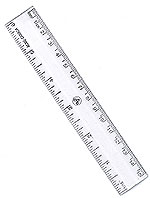What needs calibration?
 |
|
It's important to make sure your measurement tools are accurate. Even a slight discrepancy may cause major problems in your work.
|
There are potentially deadly consequences of failing to calibrate tools. For instance, improper calibration of the vehicle’s hydraulic control valves had the potential to limit control of the right front brake.
Calibration is the process by which you verify the tool or measuring device that you’re using is giving you the correct readings. Just like the auto industry, we calibrate many things at Fermilab, from tools used to measure size and weight to processes used to monitor the spread of the beam.
The key to determine if an item needs to be calibrated is what the data it supplies is used for. In other words, if the data is used to adjust hydraulic controls, as mentioned above, that item needs to be calibrated. If the item is being used to measure 10 feet of wire for installation into a light circuit, that probably doesn’t need to be calibrated.
A good rule of thumb to decide whether your item needs calibration or not is to ask yourself: “What will happen if the measurement is wrong?” In the case of the wire, if you cut it too long, you still can trim it down. If you cut it too short, you can cut another piece. In the case of the hydraulics above, with the poor control of the brakes, that’s a big deal.
So the key is to remember what will happen if the measurement is wrong. If the consequence is potentially nasty, better use a calibrated item.
—Edited by Tom Gehrke
|